A day at Pearl Harbor – USS Arizona Memorial
The only big day we had planned for Oahu was a visit to Pearl Harbor, which we had booked months ago for the 4 of us. The USS Arizona Memorial was the first priority, next was the Pacific Aviation Museum, and if we had any time left there were more sites to see at Pearl Harbor.
A quick summary of a story you’ve all heard many times – on Sunday, December 7, 1941, shortly before 8:00 a.m., Japan attacked U.S. forces at 6 sites across the island of Oahu. In less than 2 hours, Pearl Harbor and several other military installations were left in fiery ruins. A total of 2,390 Americans were killed, over 320 aircraft were destroyed or damaged, and 21 vessels were sunk or damaged. The attack immediately brought the United States into World War II (and caused the Alaska Highway to be built) – it’s hard to imagine what the world might look like if the attack had not happened.
This was the view from the front of our hotel, the Outrigger Reef on the Beach, as we waited for MJ and Jim at 10:30. That’s the Trump International Hotel across the street, with prices starting at about $400 per night and going up to pretty much any amount you want to spend.
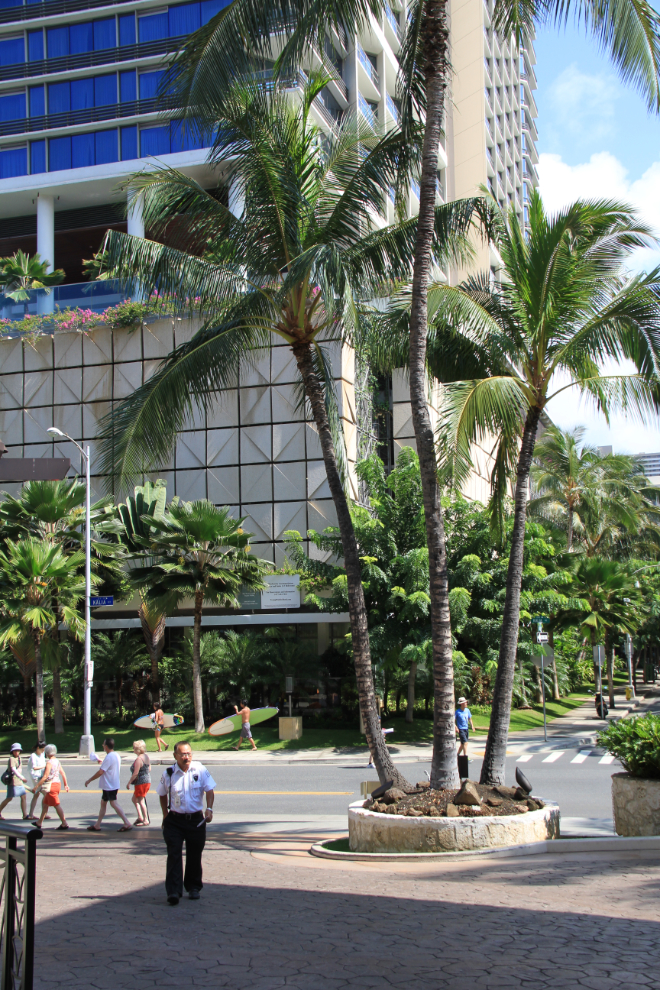
Finding a place to park at Pearl Harbor was a bit of a challenge, but I dropped the others at the gate and at 11:10 we were all ready to enter World War II Valor in the Pacific National Monument.
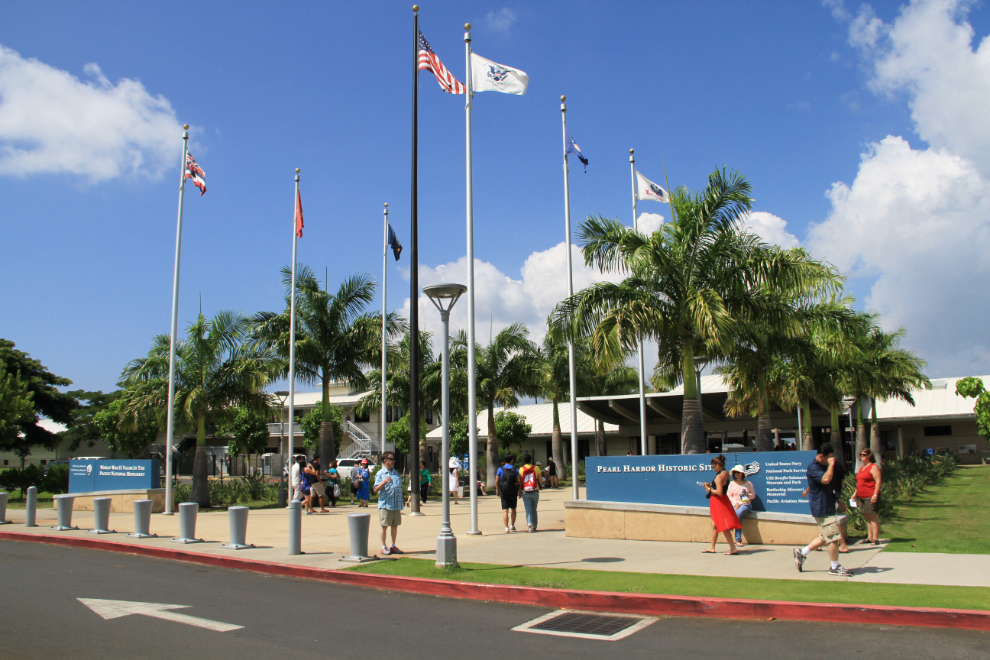
Tickets to the USS Arizona Memorial are free, and the Pearl Harbor Visitor Center has an average of 2,000 first-come/ first-serve tickets available each day, but they apparently go quickly. By paying $9.00 each, we reserved an audio tour through the site, with a 1:30 visit to the memorial, which is accessed by boat.
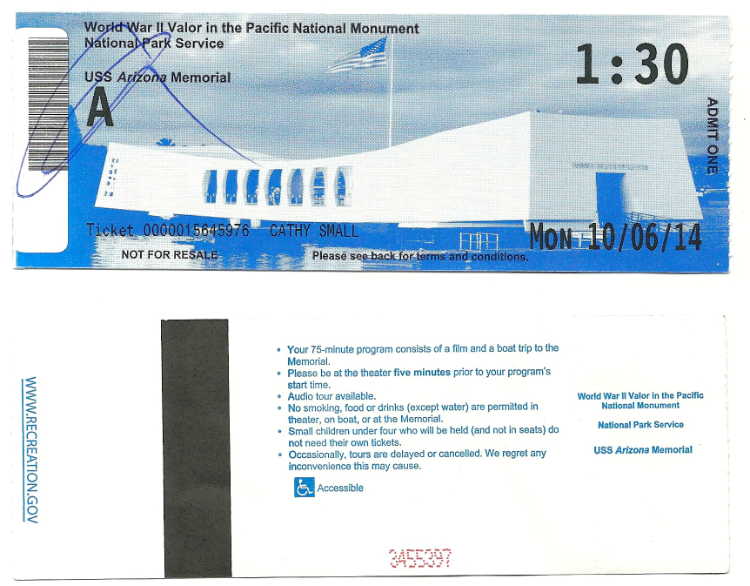
The first site on the audio tour is the Tree of Life, by architect Alfred Preis, on the left in this photo. The design is also used as the side windows in the shrine room of the memorial – it “has come to be known as a symbol of peace and harmony”.
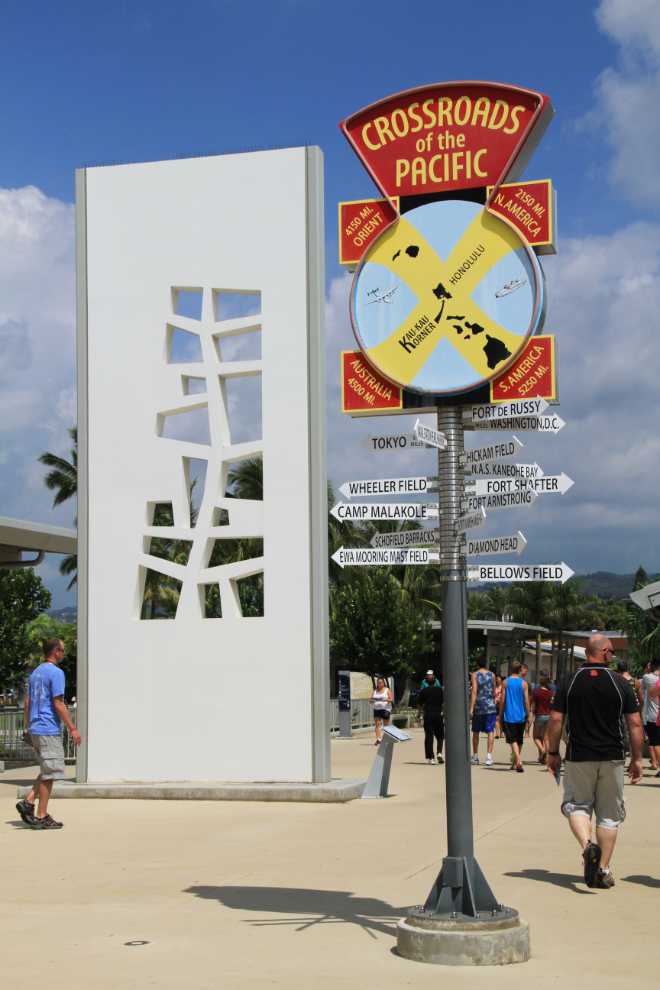
The first of 2 galleries that visitors go through is the “Road to War” Museum, which describes the long and complicated series of events that preceded the attack on Pearl Harbor.
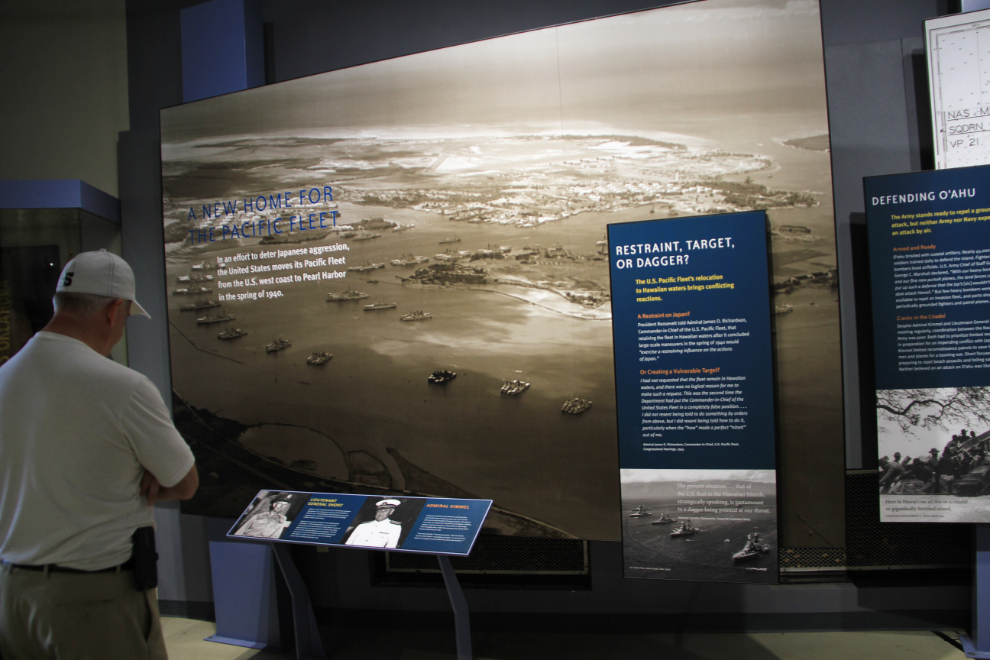
The military buildup in Hawaii, particularly keeping the U.S. Pacific Fleet there after manoeuvres in the spring of 1940, was felt by President Roosevelt to be “a restraining influence” on Japan, but Admiral Yamamoto stated that it was “tantamount to a dagger being pointed at our throat.”
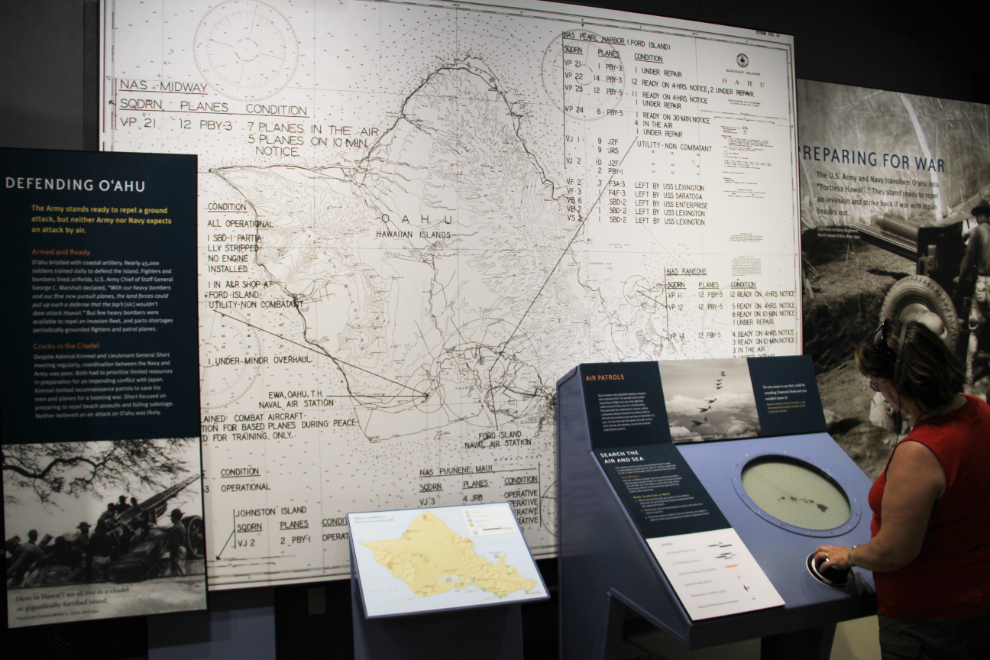
This large, very detailed model shows the Japanese aircraft carrier IMF Akagi as she looked on the morning of December 7, 1941. The 36 aircraft on deck, half of the aircraft carried on the ship, were part of the first wave of the attack – they could all be launched within 15 minutes. The Akagi, 855 feet long and with a crew of 1,600, was one of Japan’s 2 largest carriers.
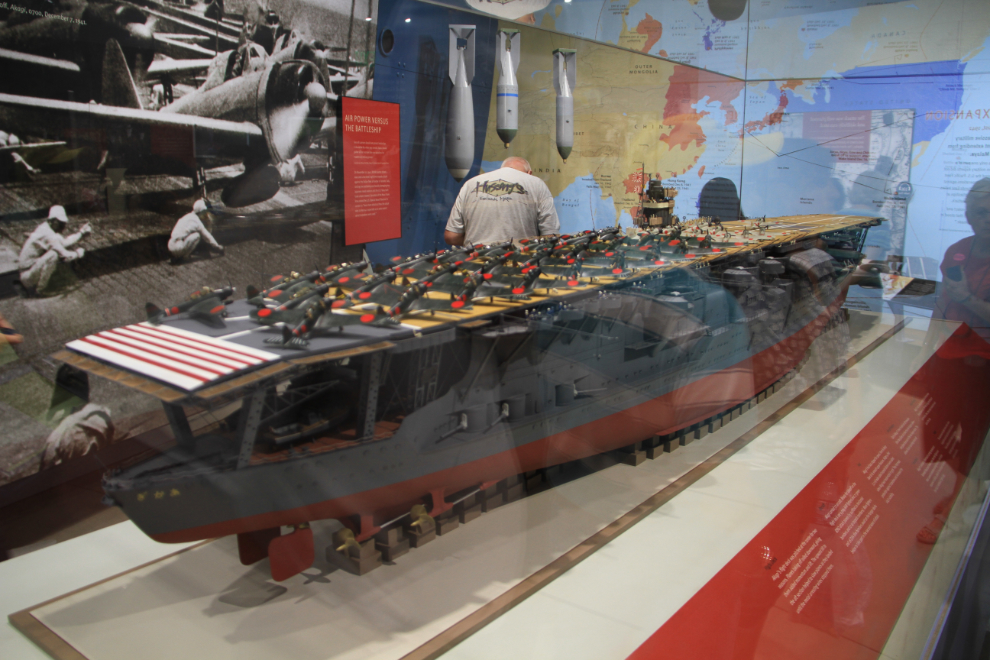
The content of the Attack Museum begins as the Japanese aircraft begin their attack. Above the visitor is a 1/3 scale model of a Japanese Type 97 B5N2 Nakajima Torpedo Bomber known later in the war as a “Kate”.
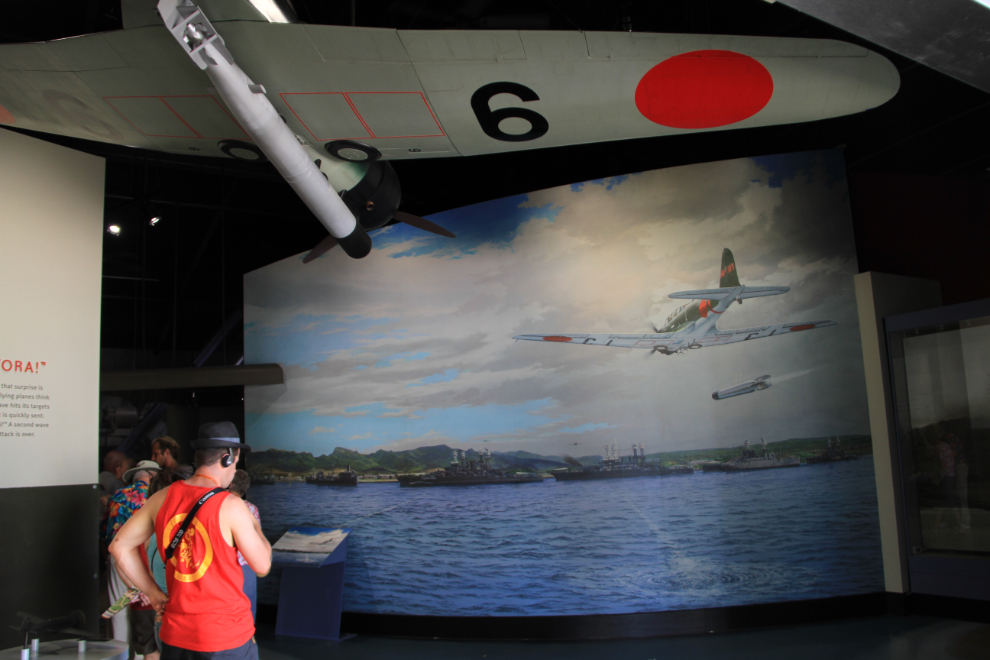
Throughout the site, the balance of written descriptions, photos and artifacts is excellent – while the horror of that morning is clear, the burned body in front of the bombed car in the centre of this photo is one of the very few like that.

For me, small items like this are very significant in telling the story well – the edited speech that would become one of the famous in the country’s history.

It’s quite incredible that some of the artifacts on display still exist. Despite the awesome damage done, the attacks on the island’s airfields – Ford Island, Hickam, Wheeler, Ewa, Kaneohe and Bellows – caused relatively few deaths.
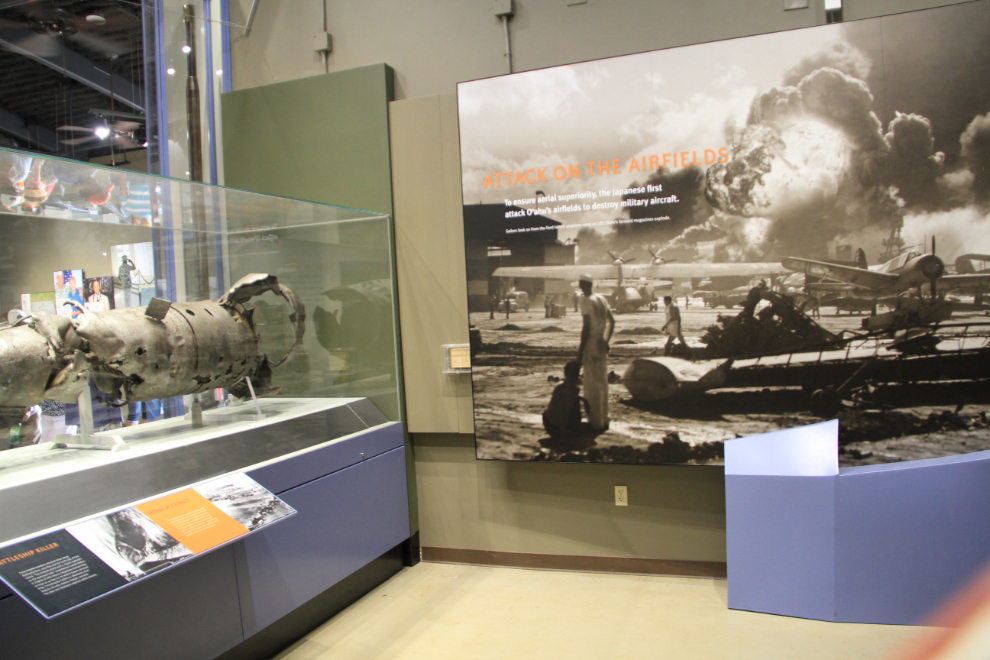
The treatment of American citizens of Japanese heritage following the attack on Pearl Harbor is in a display that’s currently being rebuilt, but the introductory panel makes me certain that it will be as unbiased as the rest of the presentations.
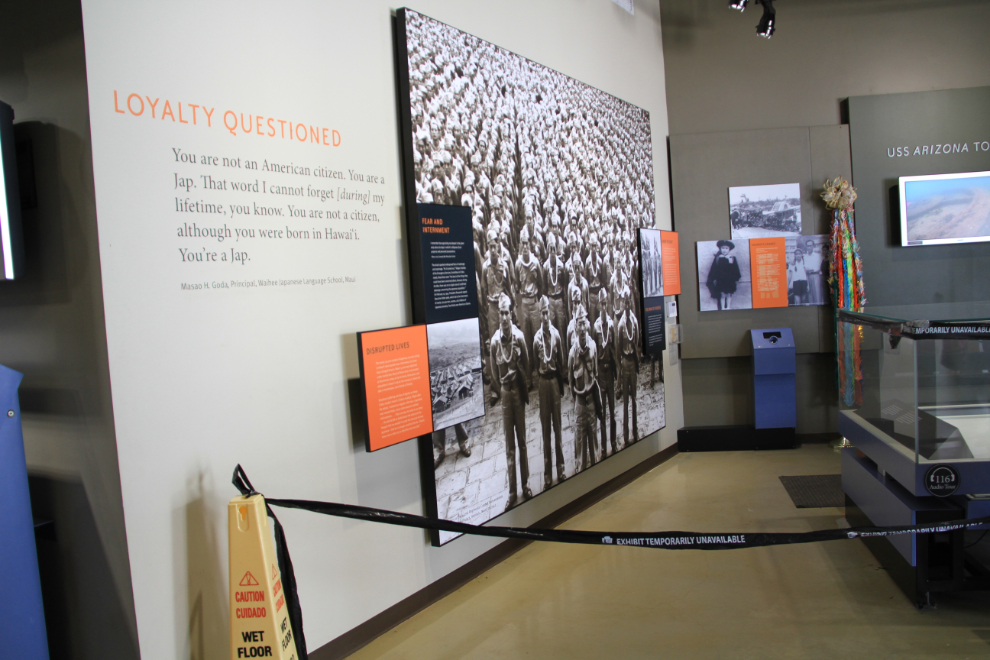
This bronze near the exit from the Attack Museum shows the position of the USS Arizona Memorial over the ship (it doesn’t actually touch the ship).
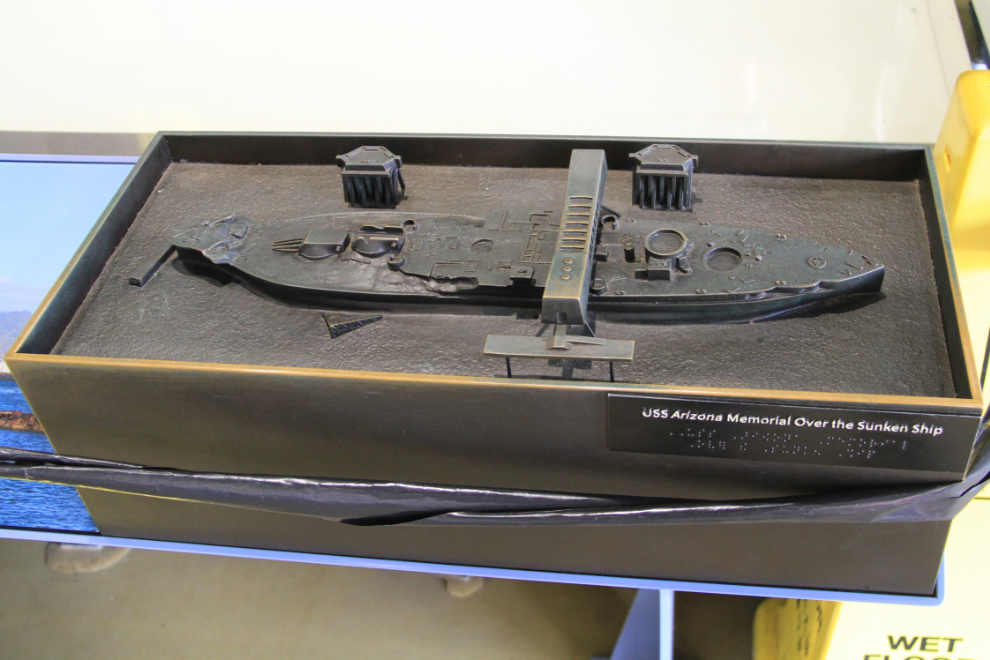
This covered area allowed us to get out of the sun while we waited for our tour to begin. The bell from the USS Arizona hangs there.
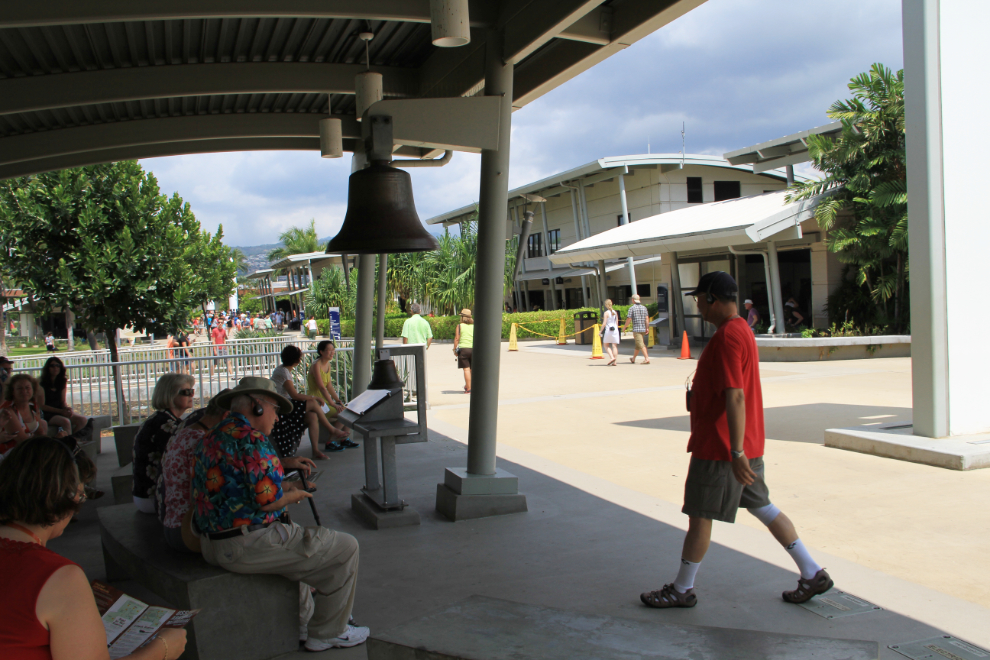
While the others stayed out of the sun (it was about 88°F – 31°C), I had more to see. Along the shore between Contemplation Circle and Remembrance Circle, panels describe the path of the attacks.
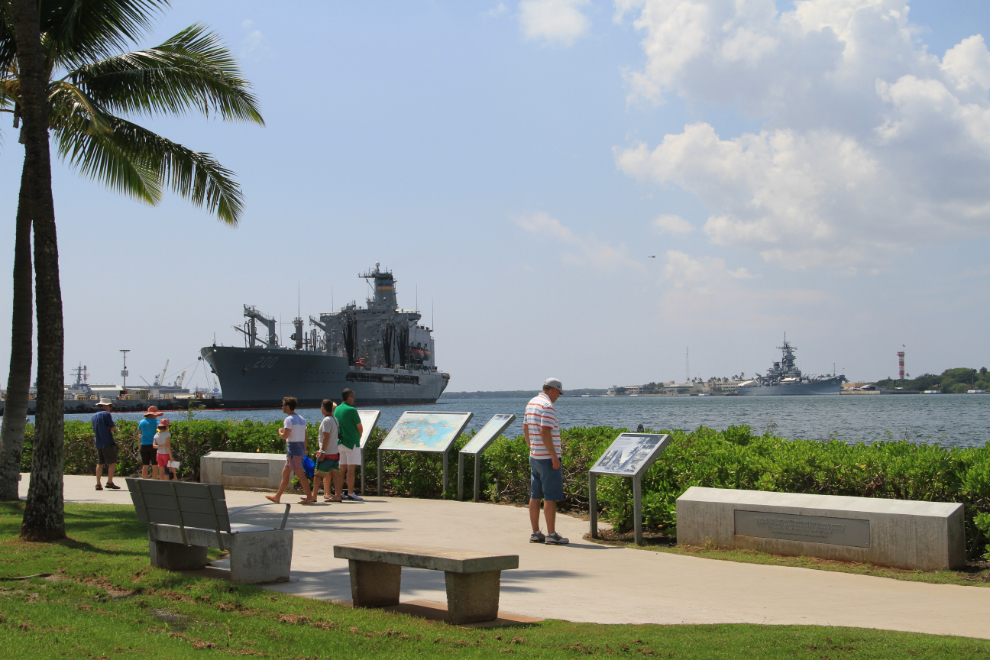
At the Battleship Missouri Memorial, you can tour “Mighty Mo”, the last American battleship ever built and the last to be decommissioned. The surrender of the Japanese on her deck on September 2, 1945, brought the Second World War to an end. We ran out of time before getting to that site.
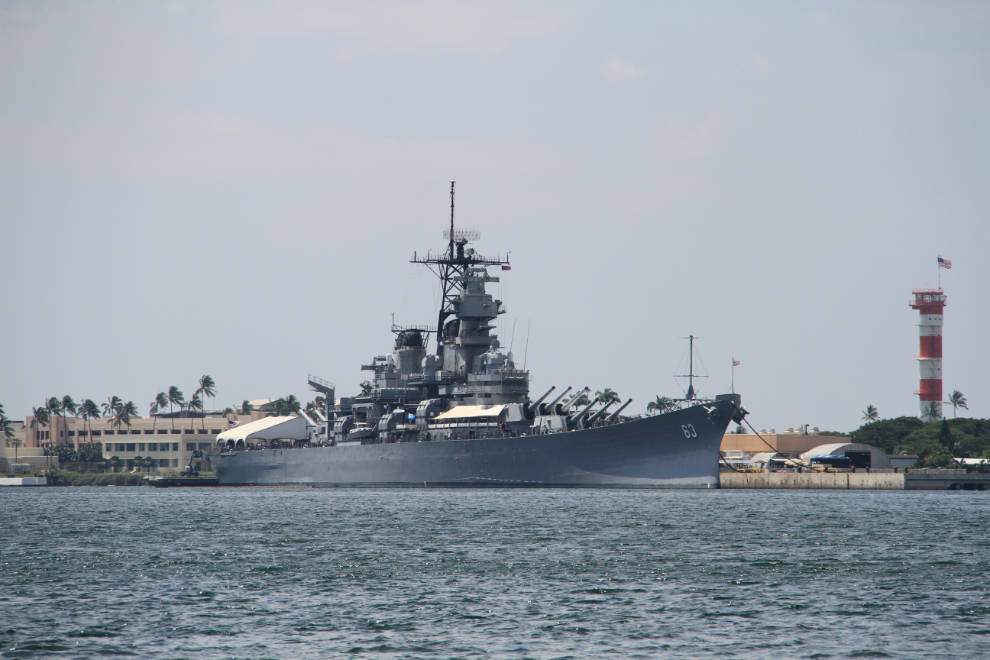
The 75-minute tour that we booked for 1:30 began with a 23-minute documentary film about the attack, and then about 200 of us boarded a Navy boat to the memorial.
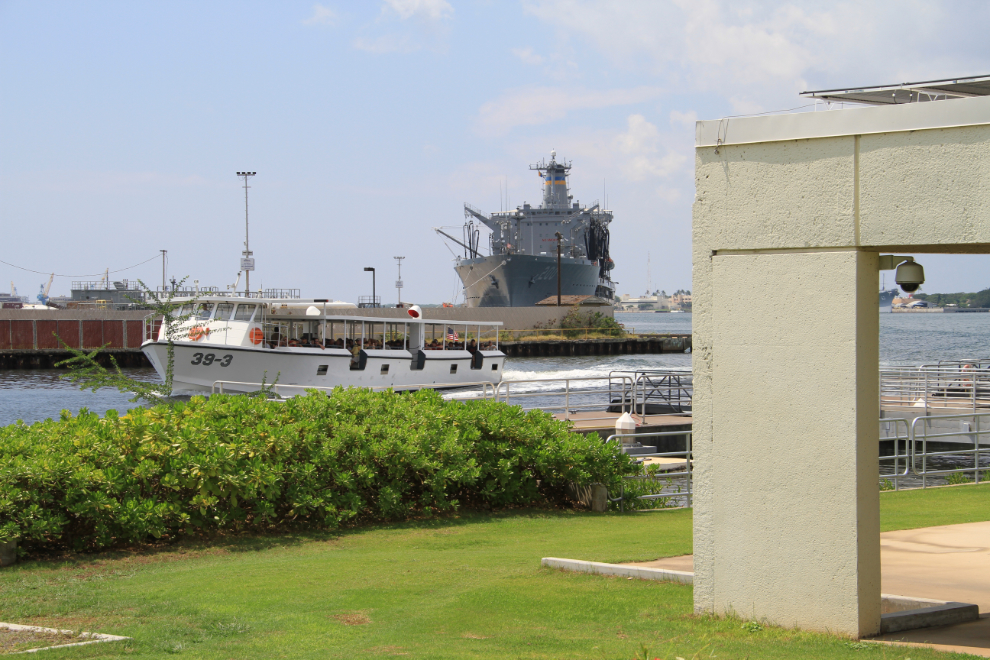
The Bowfin Submarine Museum, with over 4,000 submarine-related artifacts, from recruiting posters to battle flags, is located within walking distance of the Arizona Memorial. It’s seen here from our shuttle boat. The USS Bowfin, dubbed the “Pearl Harbor Avenger,” was launched on December 7, 1942. She completed 9 successful patrols and sunk 44 enemy ships before the war’s end.
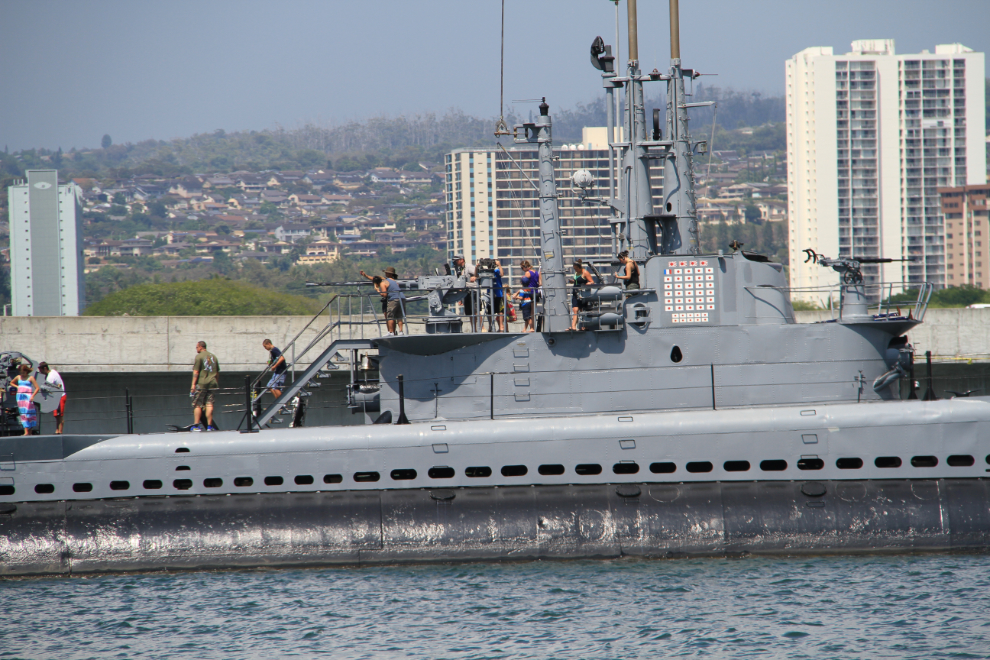
Construction of the USS Arizona Memorial began in 1960, and it was dedicated on Memorial Day, May 30, 1962. The structure is 184 feet long, 36 feet wide and 21 feet high at the ends, tapering to 27 feet wide and 14 feet high at the center. The concave silhouette symbolizes America’s initial defeat and ultimate victory in World War II.
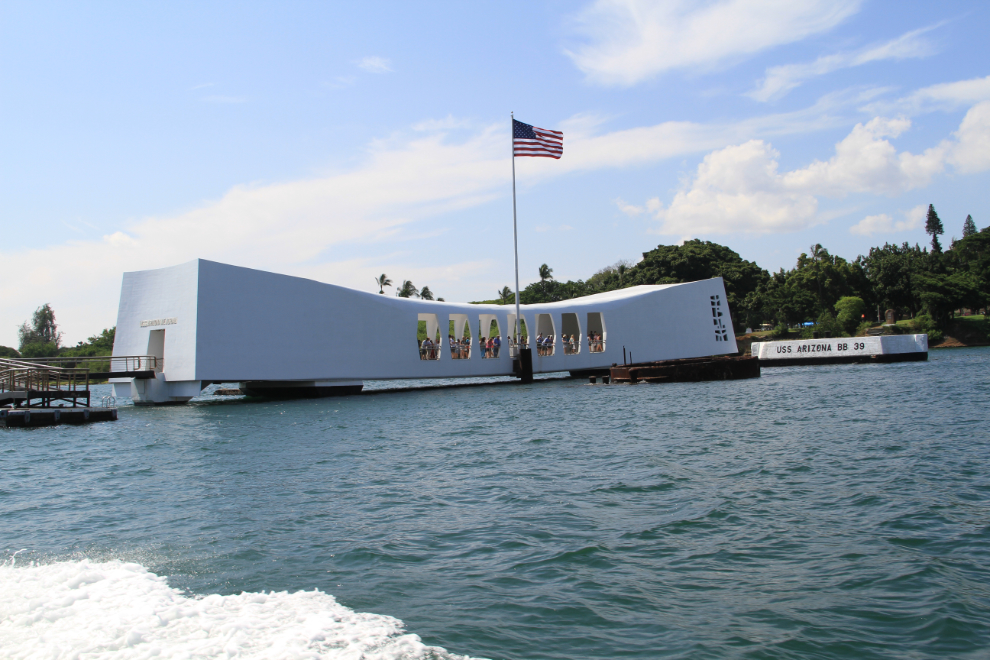
The centre of the memorial is the Assembly Room, from where visitors can look down on the deck of the USS Arizona a few feet below. Even with hundreds of people there, there was hardly a sound. During the peak summer months, an average of 4,800 people come though the memorial each day, totalling 1.8 million last year.
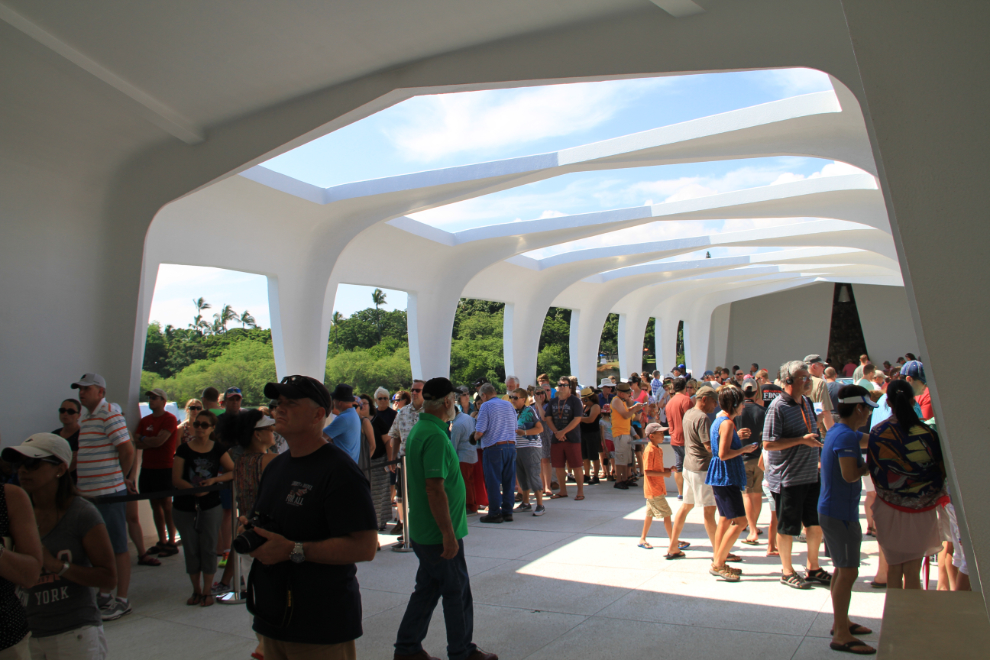
This was the base of Gun Turret No. 3. The ship was hit by four 1,757-pound bombs – the last one hit near Gun Turret 2 at 08:06, went through the armoured deck, and 7 seconds later, the forward ammunition magazine detonated. The explosion killed 1,177 of the 1,512 crewmen on board at the time.
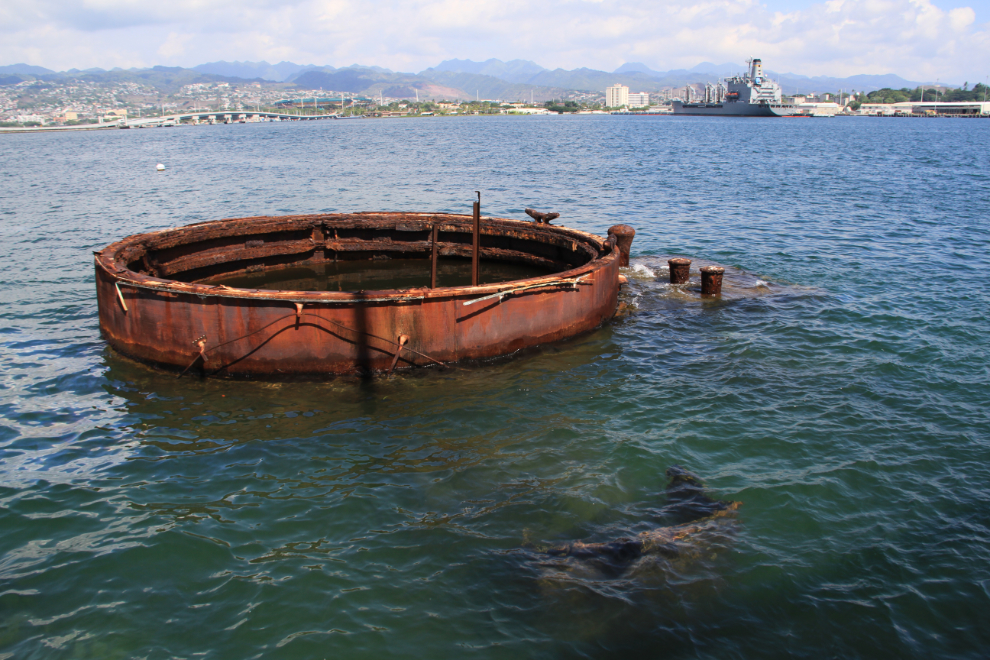
The day before the attack, the USS Arizona had taken on a full load of fuel – nearly 1.5 million gallons. About 500,000 gallons remain in the ship’s tanks and are leaking out at the rate of 4-9 quarts each day. I’m one of the people who see it as the tears of the ship, but the reality is that some day the tanks will corrode through and release all of that oil, and studies are under way to try to find a solution that doesn’t desecrate the tomb of 948 of the men killed that day, as well as others who survived but have had their ashes interred in the ship.
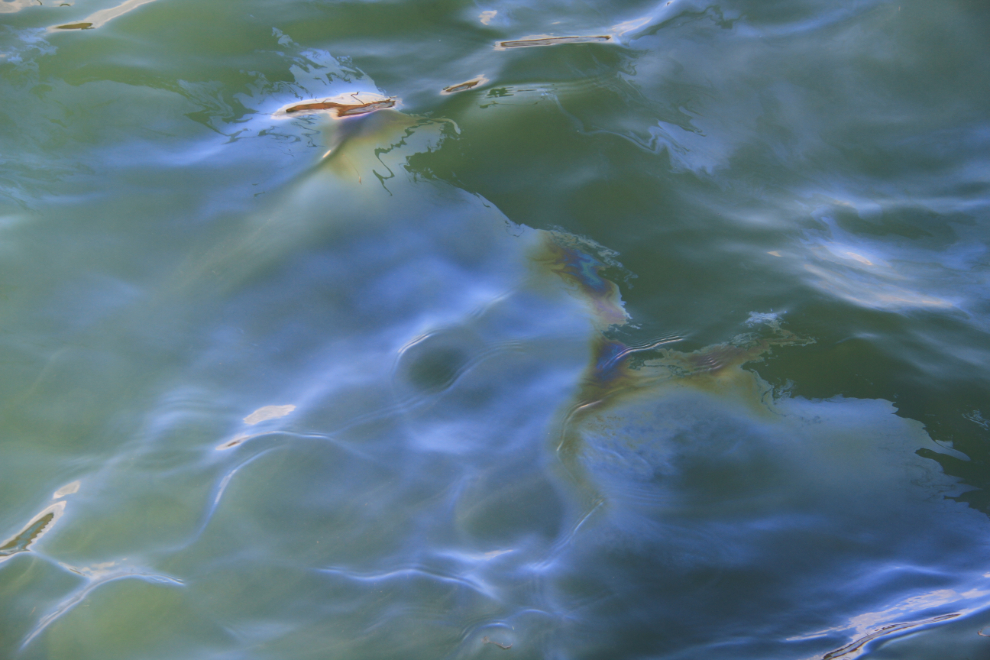
The Shrine Room, where the names of all the men killed in the explosion and sinking of the USS Arizona are listed, is currently being rebuilt, so we didn’t get to experience what many people say is the most moving part of the tour. The rebuild will be completed by November.
The choppy water wasn’t conducive to good viewing into the water, but the ship could still be clearly seen.
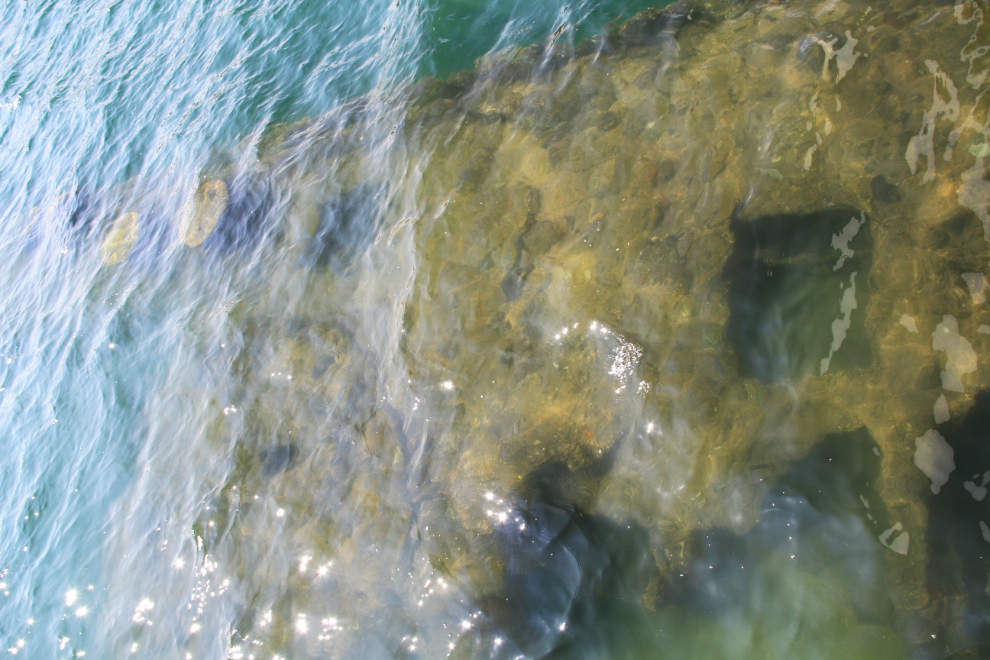
Just before 2:30 pm, we sailed away from the memorial and would soon be headed for the shuttle bus that would take us to the Pacific Aviation Museum. This post has gotten long enough, so I’ll continue the day on another post.
